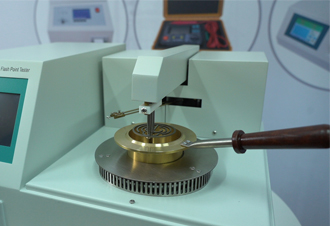 English
English


power factor testing
Understanding Power Factor Testing Importance and Methodology
Power factor (PF) is a crucial parameter in electrical systems, indicating the efficiency with which electrical power is converted into useful work output. It is defined as the ratio of real power (measured in watts) to apparent power (measured in volt-amperes). This relationship can be mathematically expressed as PF = Real Power (W) / Apparent Power (VA). A power factor of 1 (or 100%) signifies that all the energy supplied by the source is being used effectively, while a lower power factor indicates inefficiencies that can lead to increased energy costs and strain on electrical infrastructure.
Importance of Power Factor Testing
Power factor testing is essential for various reasons. First and foremost, it enables industries and organizations to evaluate the efficiency of their electrical systems. A low power factor often results in higher energy costs, as utility companies may charge penalties for poor power factor levels. Additionally, an inefficient power system can lead to overheating in electrical equipment, increased losses in transmission lines, and reduced overall system capacity.
Moreover, many organizations are now motivated to optimize their energy usage for sustainability or regulatory compliance reasons, making power factor management a critical part of energy audits and efficiency programs. It can also improve voltage stability and reduce the load on transformers and generators, contributing to a longer lifespan for electrical infrastructure.
Methodology of Power Factor Testing
Power factor testing typically involves several steps and can be executed using specialized equipment known as power analyzers or power quality monitors.
power factor testing

1. Preparation Before conducting the test, it is vital to identify the system components that will be evaluated. This may include motors, transformers, and other inductive loads. Proper safety protocols should also be established to protect personnel during the testing process.
2. Data Collection During the testing phase, the power analyzer is connected to the electrical system. This device measures key parameters such as voltage, current, real power, reactive power, and apparent power. Data is recorded for various operating conditions to understand the power factor across different loads.
3. Analysis Once the data is collected, it is analyzed to calculate the power factor. If the power factor is found to be below the acceptable range (typically below 0.9), further investigation is warranted. This may include identifying sources of reactive power, such as inductive machinery that may require correction.
4. Correction If necessary, power factor correction devices, such as capacitors or synchronous condensers, may be installed. These devices help to offset inductive loads and enhance the overall efficiency of the system by raising the power factor toward unity.
Conclusion
In summary, power factor testing is not just a regulatory requirement but an essential practice for optimizing electrical systems. By identifying inefficiencies and implementing corrective measures, organizations can effectively reduce energy costs, enhance system performance, and contribute to sustainable operational practices. As industries increasingly move towards greater energy efficiency, understanding and managing power factor becomes imperative.
-
Differences between open cup flash point tester and closed cup flash point testerNewsOct.31,2024
-
The Reliable Load Tap ChangerNewsOct.23,2024
-
The Essential Guide to Hipot TestersNewsOct.23,2024
-
The Digital Insulation TesterNewsOct.23,2024
-
The Best Earth Loop Impedance Tester for SaleNewsOct.23,2024
-
Tan Delta Tester--The Essential Tool for Electrical Insulation TestingNewsOct.23,2024





